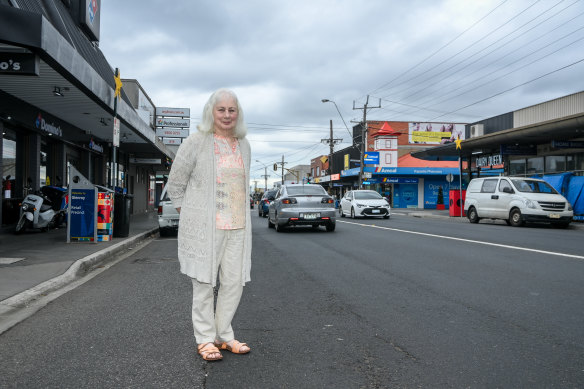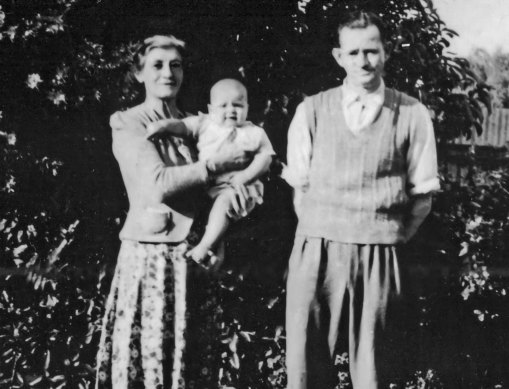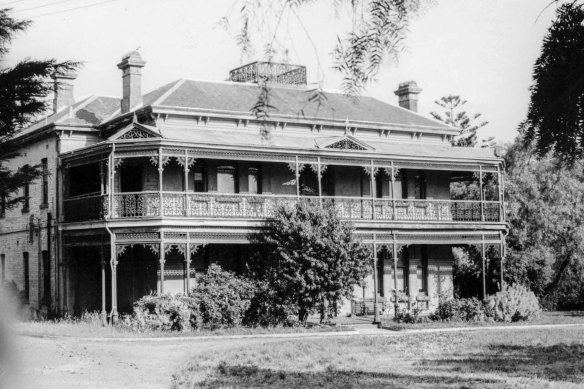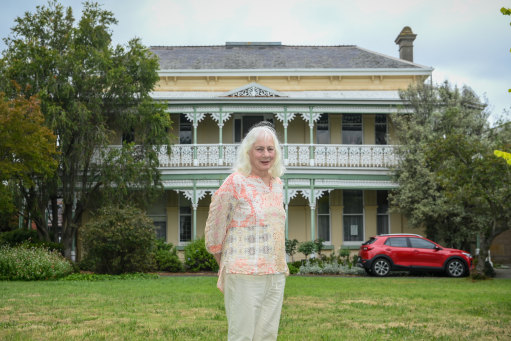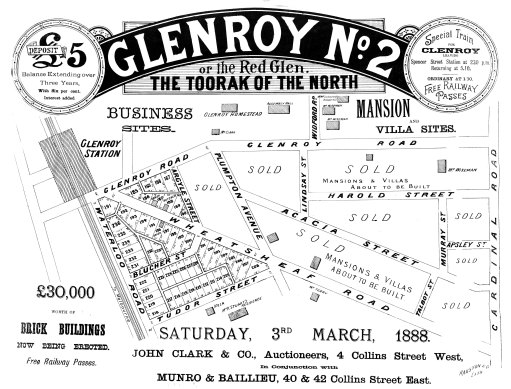Save articles for later
Add articles to your saved list and come back to them any time.
Public shootings have been in the news lately, but in 1931 there was a gunfight that saw the northern Melbourne suburb of Glenroy likened to the crime-soaked streets of Chicago.
One night, mechanic Mick Nicholson and two of his relatives fought back against six armed thugs trying to rob their garage in Pascoe Vale Road. It was the fifth break-in in three years.
Author Judy Archer on Pascoe Vale Road in Glenroy.Credit: Justin McManus
The vigilantes grabbed their own guns and crossed the road from their house to confront the intruders. A shootout ensued.
“It was just like Chicago,” Nicholson told The Herald newspaper afterwards. “Bullets were whining all round us. The shadows seemed to be filled with pistol muzzles spitting fire.”
Nicholson’s father-in-law, Robert Maw, was whacked in the head with a tyre lever, but survived.
Nicholson chased the gang on foot, firing rapidly, but they drove off at high speed.
It’s one of the yarns compiled by retired Uniting Church minister Judy Archer in Glenroy Township, her new history book of the suburb she grew up in – 15 kilometres north of Melbourne’s CBD.
More than 60 “old timers” of the suburb contributed true tales to the project, which Archer self-funded. She set out jotting down childhood memories, but it snowballed.
One yarn is about the one-legged footballer, Jim Fyfe, whose leg was amputated serving in World War I.
In 1929, The Herald reported that Fyfe would play for Glenroy when they were short a player and in one game performed “a wonderful feat”, kicking all three of his team’s goals against South Brunswick, using his wooden leg.
WWI veteran and sometimes local footballer Jim Fyfe with wife Kath and granddaughter Shirley.
One interviewee for Archer’s book, Sheila Hobson, who was born in 1926, spoke of being one of 11 children of the Petersen family who lived in a house beside a railway crossing in Camp Road, Broadmeadows.
Their job was to manually close the road gates when a train came through. The Petersen children started formal duties from the age of 16. The parents had just two weeks off per year.
Glenroy became known as working class, but in the 1880s, property developers advertised it as “the Toorak of the north” and beautiful mansions were built.
But the 1890s economic crash, two world wars and the 1930s Depression destroyed those dreams.
Wiseman House was built in the 1880s when Glenroy was promoted as the new Toorak.
Sixty years later, Archer remembers seeing mansions “frozen in time, amid open paddocks, muddy roads, pine trees and thistles”.
Only a few – including Wiseman House in Widford Street – still stand, surrounded by houses.
Archer, 82, who now lives in Bacchus Marsh, says that after World War II, governments overlooked Glenroy for sealed roads and sewerage.
A common joke among her friends was that “we left Glenroy as soon as we got married because it was the only way to get a flush toilet”.
Archer outside Wiseman House.Credit: Justin McManus
“The whole time I lived in Glenroy, until I was 20, I never had a flush toilet,” Archer said. “We always had outside dunnies.”
“[After WWII] most new housing was small and modest,” Archer writes. “Glenroy was no longer ‘the Toorak of the north’.”
Archer says Glenroy is now unrecognisable – much busier and more upmarket compared with when she was a child.
Shattered dreams: Grand plans for Glenroy, shown in this 1888 real estate ad, were shattered by an economic crash.
Archer said she wrote the book for the old timers of Glenroy, but also future generations.
The book Glenroy Township can be ordered by email at [email protected] or bought at Glenroy Newsagency.
Get the day’s breaking news, entertainment ideas and a long read to enjoy. Sign up to receive our Evening Edition newsletter.
Most Viewed in National
From our partners
Source: Read Full Article

